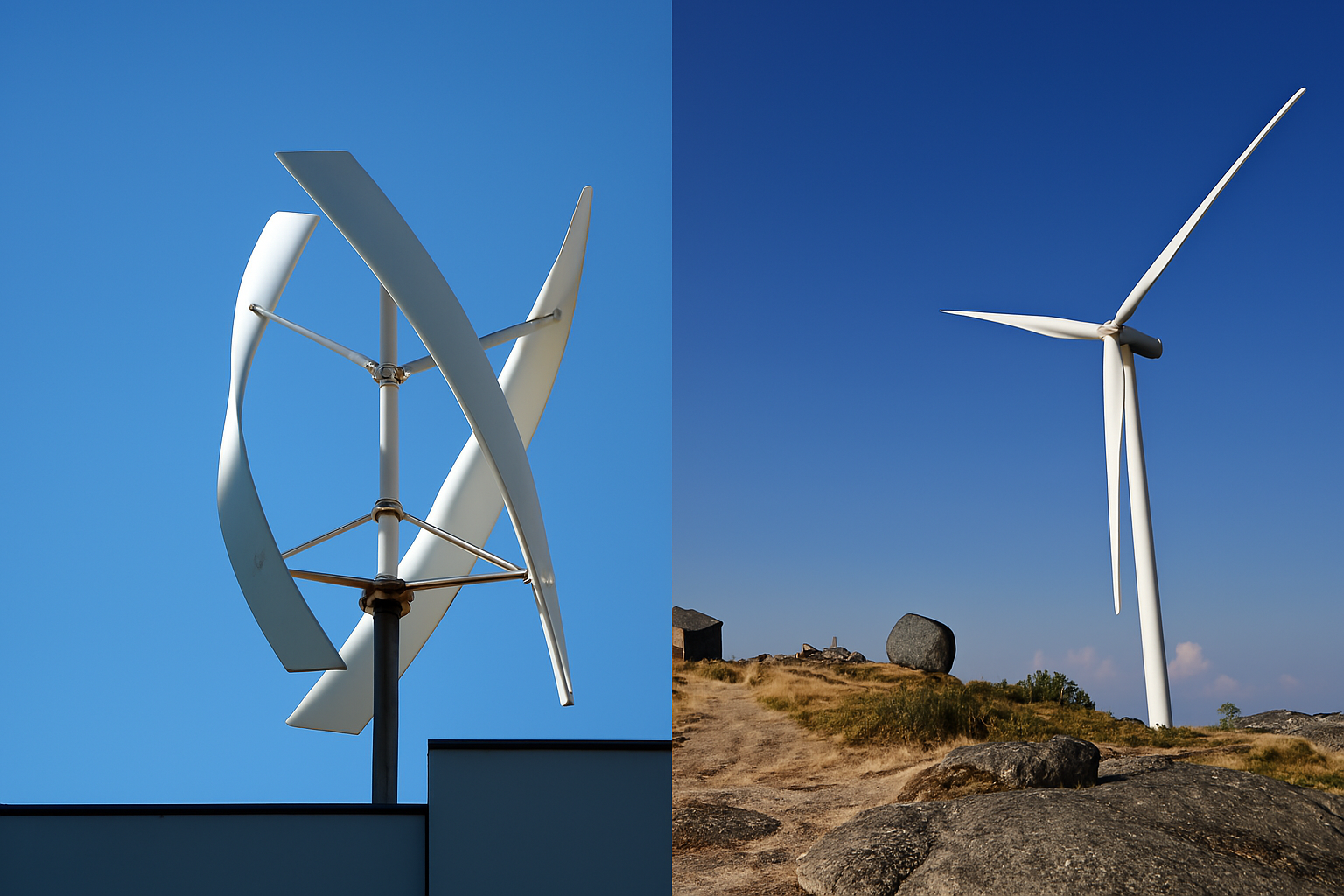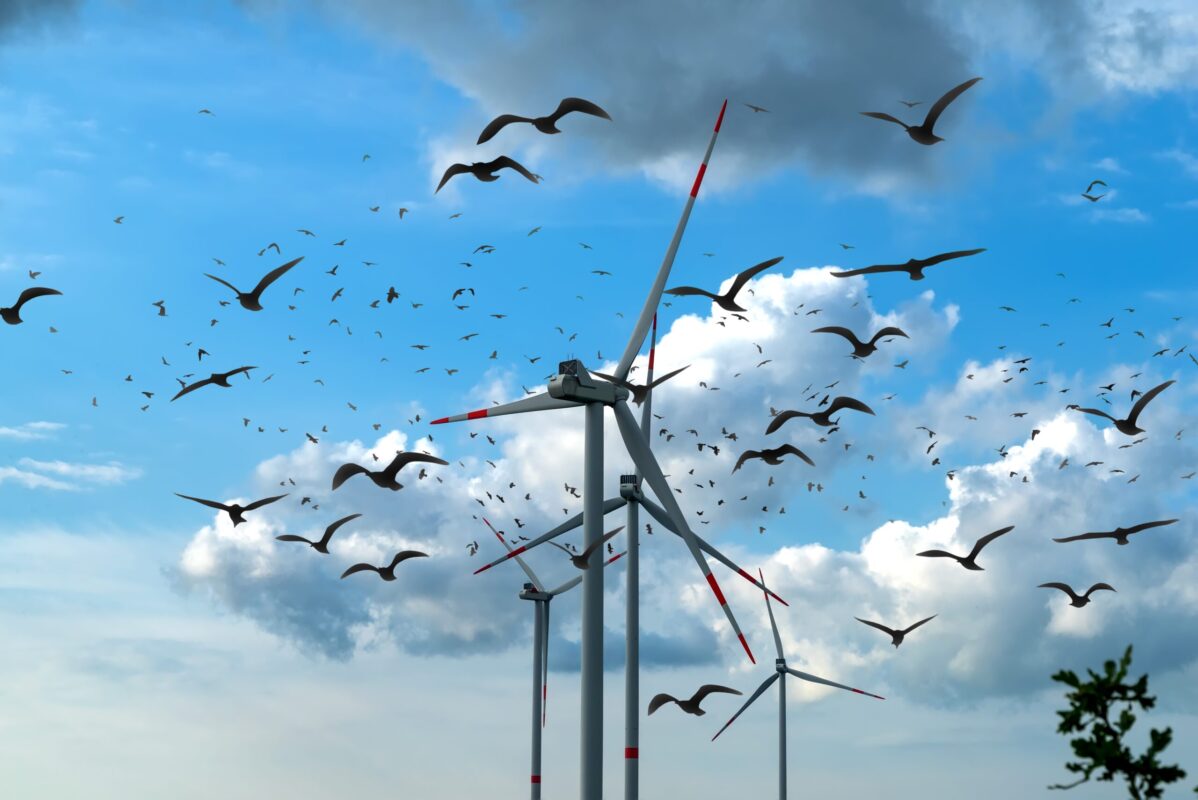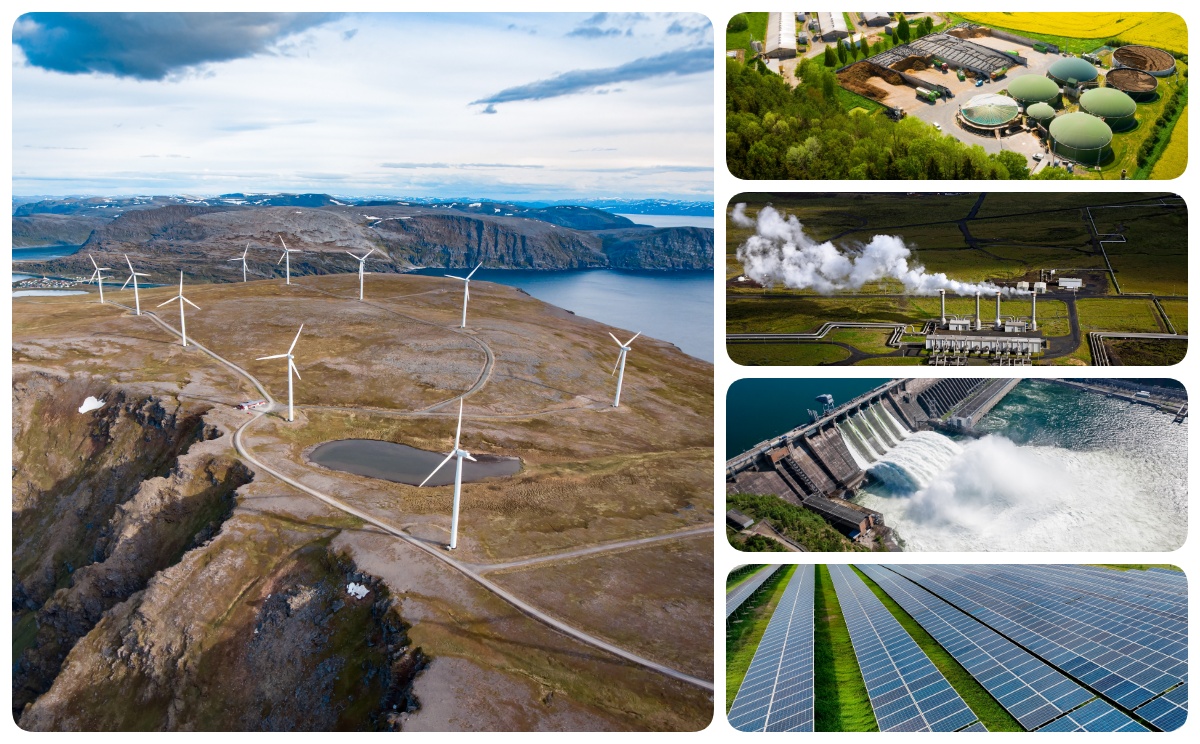When choosing between a horizontal axis wind turbine and vertical axis wind turbine, it’s important to understand their fundamental differences. Both horizontal and vertical axis wind turbines offer unique strengths, but the advantages and disadvantages of vertical axis wind turbine technology are particularly distinct. In this article, we will explore the pros and cons of each type to help you determine which one is the right fit for you.
What Is Horizontal Axis Wind Turbine (HAWT)?
Horizontal Axis Wind Turbines (HAWTs) dominate today’s wind energy systems. These turbines use a main rotor shaft that runs parallel to the ground. The blades rotate around a horizontal axis like airplane propellers. Most people picture HAWTs when they think of traditional windmills or modern commercial wind farms.
Structure and Working Mechanism of HAWTs
A HAWT’s structure combines several components that work together:
– Rotor Blades: Two or three aerodynamically designed blades capture wind energy
– Nacelle: The housing contains the generator, gearbox, and control systems
– Tower: The structure lifts the turbine to capture stronger winds at higher altitudes
– Yaw System: This component rotates the top assembly to face the wind
The turbine’s operation follows a straightforward process. Wind flowing over the blades creates lift, much like airplane wings, which makes the rotor spin. The rotational energy moves through a shaft to the generator and transforms into electrical energy. Most HAWTs use a gearbox to boost the rotational speed from slow-turning blades to faster speeds needed to generate electricity efficiently.
Advantages of Horizontal Axis Wind Turbines
HAWTs’ widespread adoption stems from several key benefits:
– Superior Efficiency: The design converts wind energy more efficiently, especially with steady, unidirectional winds.
– Height Advantage: Taller towers reach stronger, more consistent wind resources where speeds increase substantially.
– Variable Blade Pitch: Modern HAWTs adjust blade angles based on wind conditions to optimize performance and protect against extreme weather.
– Proven Technology: Years of commercial development have refined these designs, making them more reliable and cost-effective.
– Scalability: The design works for small residential units and massive utility-scale installations that exceed several megawatts in capacity.
HAWTs lead the market for large-scale energy production because of their efficiency and scalability advantages. These turbines work best in open landscapes with consistent wind patterns.
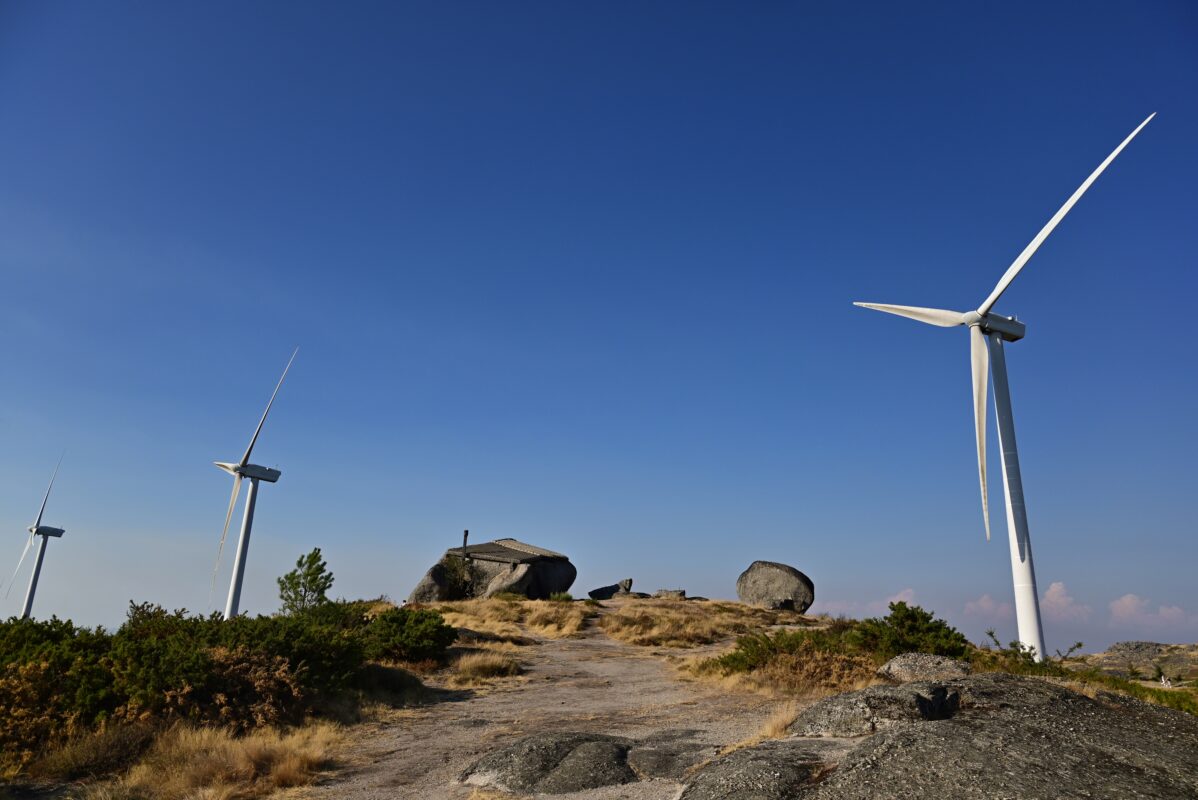
What Is Vertical Axis Wind Turbine (VAWT)?
Vertical Axis Wind Turbines (VAWTs) look quite different from regular wind turbines. Their main rotor shaft stands straight up and down instead of sideways. These turbines spin around a vertical axis and catch wind from any direction without having to turn themselves around.
Structure and Working Mechanism of VAWTs
VAWTs work with several key parts that fit together in a special way:
– Rotor Blades: Curved or straight blades connected to a vertical shaft
– Generator: Sits near the bottom of the turbine, close to the ground
– Support Structure: Simpler than regular turbines since it doesn’t need to turn into the wind
– Mounting System: Works well on rooftops or on the ground
VAWTs create power through drag forces, lift forces, or both together. Wind hits the blades from any direction and makes them spin around the middle shaft. This spinning motion powers the generator to make electricity. You’ll find two main types of VAWTs:
1.Darrieus Type like Freen-6 or Freen-20: Uses lift forces with curved blades that look like an eggbeater
2.Savonius Type: Works with drag forces using S-shaped or scooped blades
Advantages of Vertical Axis Wind Turbines
VAWTs come with some great benefits that make them perfect for certain uses:
– Omnidirectional Operation: They work well whatever the wind direction and don’t need complex turning mechanisms
– Lower Noise Levels: These turbines run more quietly than regular ones, which makes them great for homes and cities
– Reduced Visual Impact: Their shorter height and smaller size make them blend better with the surroundings
– Easier Maintenance: The generator and other parts sit close to the ground, so they’re easier and cheaper to fix
– Bird-Friendly Design: Birds can spot these blades better, and the slower spinning might mean fewer accidents
– Urban Integration: The compact design works well in choppy wind conditions, making them perfect for buildings
While you won’t see many VAWTs in big wind farms, they shine in special situations where regular wind turbines don’t work as well.
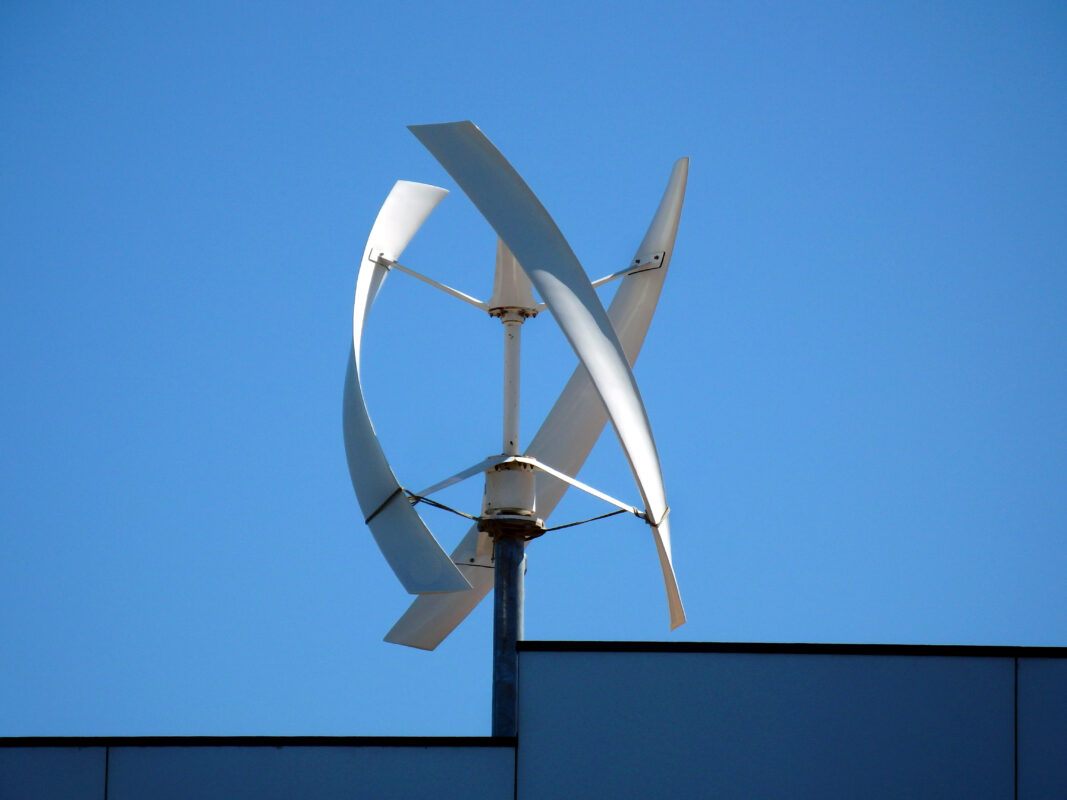
Differences Between Horizontal and Vertical Axis Wind Turbines
Understanding the basic differences between horizontal and vertical axis wind turbine designs helps you pick the right option for specific needs. These designs are different not just in how they look, but also in their performance, setup needs, and best uses.
The performance gap between these designs is quite clear. HAWTs can reach 40-50% efficiency in perfect conditions. VAWTs lag behind with 30-40% efficiency. This happens because HAWTs can use their entire blade surface all the time, while VAWT blades work against the wind during parts of their spin.
Here’s how they stack up in terms of setup and space needs:
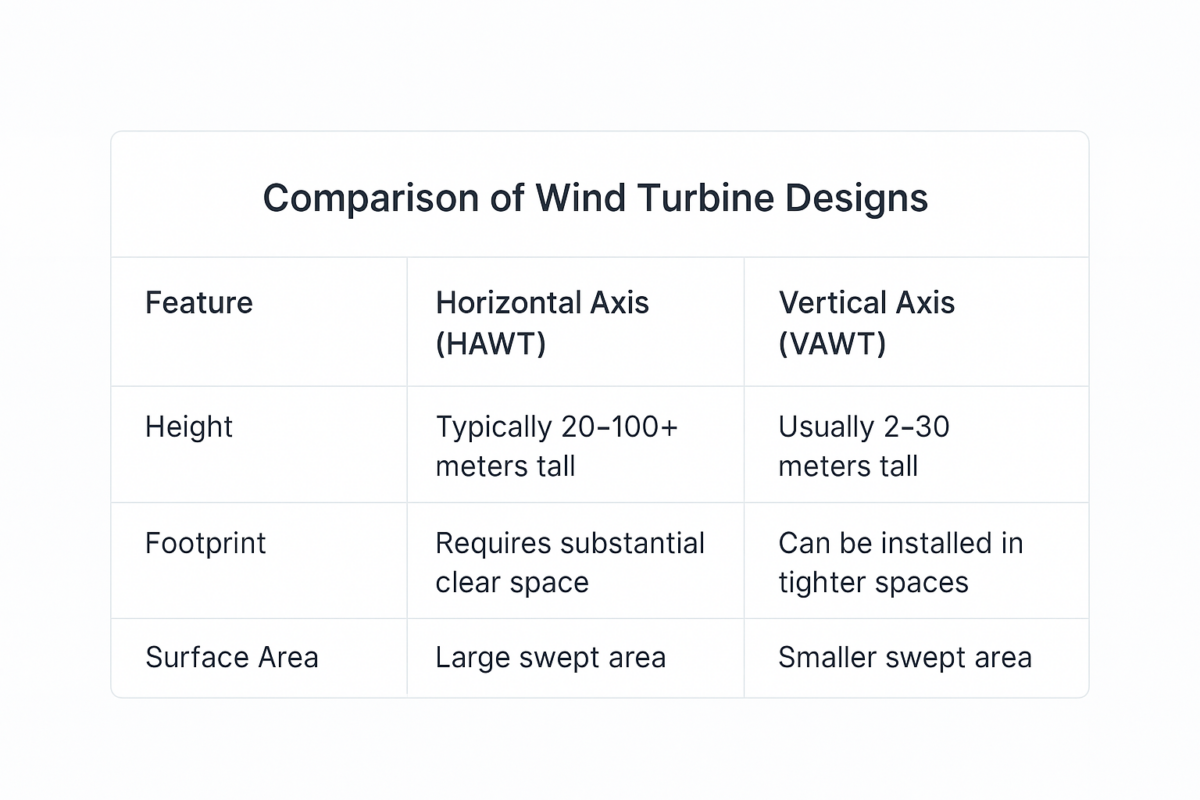
The startup behavior shows clear differences too. VAWTs by Freen can generate power in winds as low as 3m/s, which makes them perfect for areas with lighter winds.
These turbines handle wind conditions differently. HAWTs work best with steady, one-direction winds and don’t do well in turbulent conditions. VAWTs are much better at handling turbulent and changing wind directions, which makes them a better fit for city settings.
The noise levels are also quite different. HAWTs make more noise because of their faster tip speeds and bigger size. VAWTs run more quietly, which matters a lot for home installations.
Maintenance access creates another key difference. You’ll need special equipment to service HAWT components in their nacelle high above ground. VAWTs are easier to maintain since their generators and key parts sit at or near ground level.
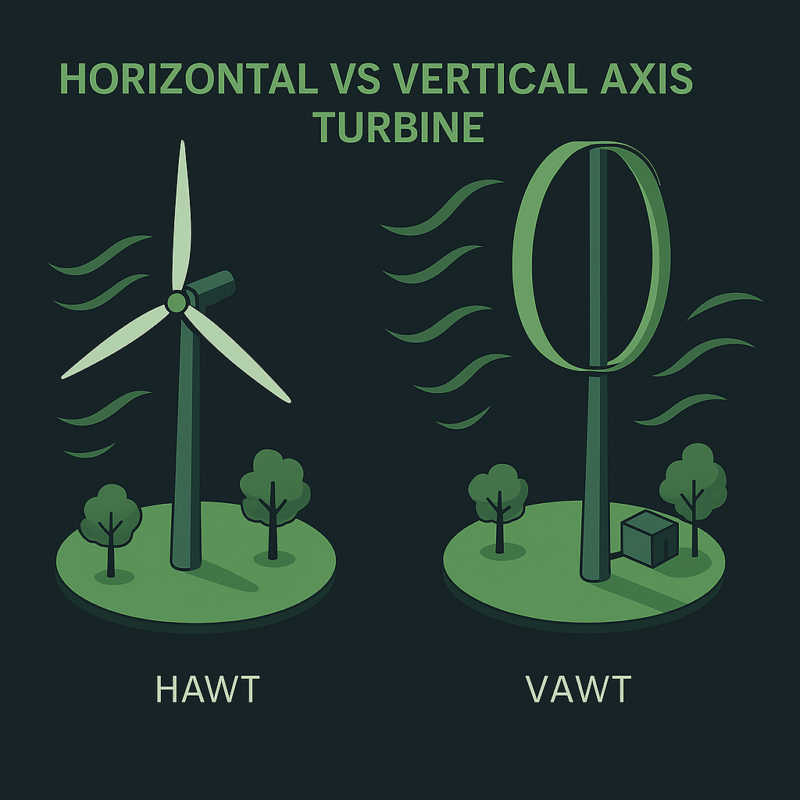
Which Wind Turbine Is Right for You?
Your location, energy requirements, and environmental conditions play a crucial role in selecting the right wind turbine. Each type serves a different purpose, and knowing their ideal applications will help you make the best choice.
Best Applications for Horizontal Axis Wind Turbines
Large-scale power generation scenarios showcase the excellence of horizontal axis wind turbines. Commercial and industrial applications favor these turbines because of their remarkable efficiency. These turbines work best for:
– Wind Farms and Mass Electricity Production: Large-scale wind farms extensively use HAWTs since their design delivers substantial power output ranging from 2 to 8 MW per unit
– Open Landscapes: Strong, steady winds in coastal areas, open fields, and higher elevations create optimal conditions for these turbines
– Offshore Installations: Higher altitudes capture stronger winds, making these turbines perfect for offshore deployment where wind speeds remain consistently high.
– National and Industrial Projects: The propeller-like design of HAWTs benefits from existing propeller research, which explains why all but one of these commercially proven wind energy systems use them
Best Applications for Vertical Axis Wind Turbines
VAWTs excel in specific situations where HAWTs might face challenges. Here’s where they shine:
– Urban and Residential Settings: These turbines with turbulent wind conditions operate effectively in built-up areas. Residential properties benefit from their compact design and quieter operation
– Rooftop Installations: VAWTs’ modular, smaller design fits perfectly on buildings with limited space
– Areas with Unpredictable Wind Patterns: These turbines capture wind from any direction, making them reliable in locations with changing wind patterns
– Floating Offshore Applications: Marine applications benefit from VAWTs’ increased static stability and lighter floating foundations
– Remote or Isolated Locations: Small islands, offshore oil platforms, and fish farms can rely on these turbines for power generation
HAWTs remain the top choice when substantial power generation matters most, especially in open areas with steady winds. VAWTs prove their worth in specialized applications where space limits, visual impact, or turbulent winds become key factors.
Are Vertical or Horizontal Wind Turbines Better?
Picking the right wind turbine needs a good look at your specific needs, location, and goals. HAWTs show better efficiency and work great for large-scale power generation. VAWTs are a great choice for urban areas where wind patterns can be unpredictable.
Our detailed analysis reveals that commercial wind farms and offshore installations prefer HAWTs because of their tested technology and easy scaling options. VAWTs are a great way to get results in special cases where space is tight, visual effects matter, or wind conditions get turbulent.
Your specific case will determine which wind energy technology works best. HAWT installations benefit large-scale energy projects, especially in open areas with steady winds. Urban or residential projects might find VAWTs more practical. These turbines’ compact design, quieter operation, and better handling of turbulent winds make them ideal for these settings.
Both turbine types are crucial players in making renewable energy more common. Each design’s unique advantages, when matched correctly to specific uses, help create environmentally responsible power generation. A clear grasp of these differences lets stakeholders choose the wind turbine technology that matches their needs perfectly.


